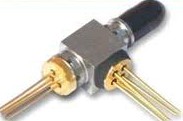Quote of the Day
The two most important days in your life are the day you were born and the day you find out why.
— Mark Twain
Yesterday, I was in a meeting where we were evaluating the risk associated with a new optical component. It is very important to make sure that a vendor can really make a part in volume before we put that part into a revenue-critical product. Companies take great pains to ensure the security of their supply chains. The most secure type of part is one that is manufactured to an industry standard and is made by multiple vendors. Unfortunately, products that use only multi-source, standards-based parts will not give you any advantage in the marketplace. To be able to build a profitable product in volume reliably, you must apply enough new technology to give you a marketplace advantage while maintaining an acceptable level of component supply risk − balance is everything.
When we evaluate the risk of a new component, we ask if the technology associated with the part constitutes one of three types of change:
- Step
- The part is a member of an existing family of parts. The technology used to manufacture the part is within the normal range of performance for that technology today. We use parts that are a step in technology all the time. Memories and processors generally fall into this category.
- Stretch
- The part is a member of an existing family of parts, but it has performance parameters that are beyond the normal range of that technology today. I often see lasers and receivers in this category. I try to use parts like this only when it gives me a significant advantage.
- Leap
- The part is different enough from what exists today that it is the first member of a new family. It has performance parameters that that are beyond the normal range of the standard technology. I do not encounter this type of change often -- a few times a year. They are very risky and I try to avoid them.
I decided that the part I was looking at last night was a "leap" component. Here is why:
- I cannot get any parts for six months. This means I cannot thoroughly evaluate the part now.
- It is not being used in any significant volume at this time. If I used the part, I would be one of two companies rolling the part out at the same time.
- The performance parameter that makes this part attractive is its price. Since they really are not building the part yet, does this vendor know what its real price is going to be? I doubt they really know what the price will be in six months.
I cannot build a high-volume product with a "leap" component in it. The risks are just too great. I will look for another part.

